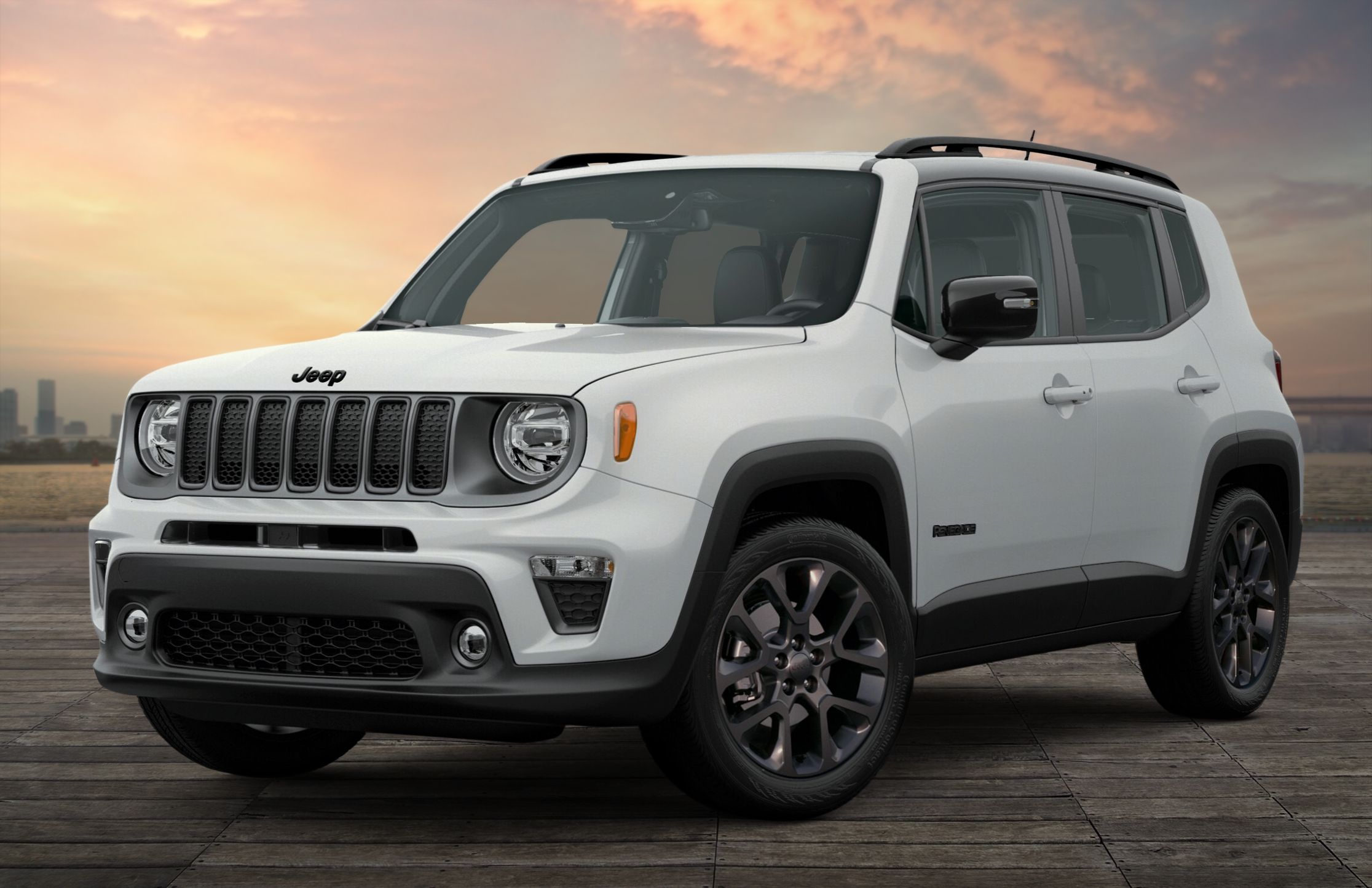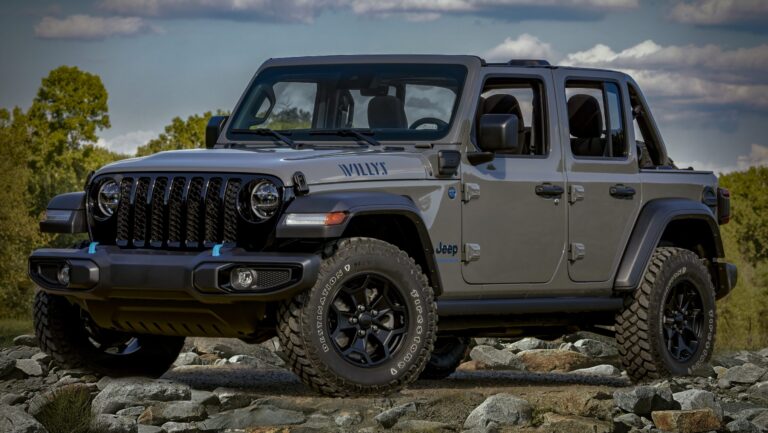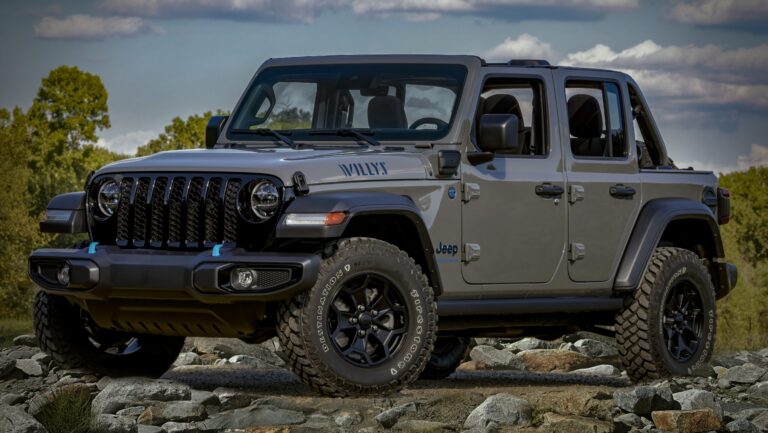Jeep XJ Rims For Sale: A Comprehensive Guide to Upgrading Your Cherokee
Jeep XJ Rims For Sale: A Comprehensive Guide to Upgrading Your Cherokee jeeps.truckstrend.com
The Jeep Cherokee XJ, produced from 1984 to 2001, holds a legendary status in the off-roading community and among automotive enthusiasts. Known for its robust unibody construction, reliable powertrains, and iconic boxy design, the XJ remains a popular choice for daily driving, overland adventures, and serious rock crawling. A critical component in optimizing your XJ’s performance, aesthetics, and capability is its wheels, or "rims." Whether you’re looking to replace damaged stock wheels, accommodate larger tires, or simply enhance your Cherokee’s visual appeal, navigating the market for Jeep XJ rims for sale can be a complex yet rewarding endeavor.
This comprehensive guide will delve into everything you need to know about purchasing rims for your beloved XJ. From understanding crucial specifications and exploring various types to finding the best deals and ensuring a proper fit, we’ll equip you with the knowledge to make an informed decision and take your Jeep Cherokee to the next level.
Jeep XJ Rims For Sale: A Comprehensive Guide to Upgrading Your Cherokee
Why Upgrade Your XJ Rims? The Benefits of a Wheel Makeover
Upgrading the rims on your Jeep XJ is more than just an aesthetic choice; it’s a functional modification that can significantly impact your vehicle’s performance and capabilities. Here are the primary reasons XJ owners seek out new wheels:
- Accommodating Larger Tires: One of the most common reasons to buy new rims is to fit larger, more aggressive off-road tires. Stock XJ rims often have too much positive backspacing, which can cause larger tires to rub against suspension components or fender wells. Aftermarket rims with less backspacing push the tires further out, providing the necessary clearance.
- Enhanced Off-Road Performance: Different rim designs and materials offer varying levels of durability and performance. Steel wheels are often preferred for their ability to bend rather than shatter under impact, making them easier to repair on the trail. Beadlock wheels are essential for serious rock crawling, allowing you to run extremely low tire pressures without the tire bead detaching from the rim.
- Improved Aesthetics: Rims are a major visual component of any vehicle. A new set of wheels can dramatically change the look of your XJ, giving it a more aggressive, classic, or custom appearance that reflects your personal style.
- Weight Reduction (Alloy Wheels): While steel wheels are durable, alloy wheels are significantly lighter. Reducing unsprung weight can lead to minor improvements in acceleration, braking, and fuel economy, though for an XJ, the primary benefit is often aesthetic or specific performance (like reducing rotating mass for quicker steering response).
- Replacement of Damaged or Worn Rims: Over time, stock rims can suffer from rust, bends, cracks, or curb rash. Finding Jeep XJ rims for sale allows you to replace damaged wheels, ensuring safety and proper tire seating.

Understanding XJ Rim Specifications: The Key to a Perfect Fit
Before you start browsing Jeep XJ rims for sale, it’s crucial to understand the technical specifications that determine compatibility and fitment. Getting these wrong can lead to rubbing issues, handling problems, or even unsafe conditions.
- Bolt Pattern (PCD): The most critical specification for any wheel is its bolt pattern, also known as the Pitch Circle Diameter (PCD). For all Jeep Cherokee XJ models (1984-2001), the bolt pattern is 5×4.5 inches (or 5×114.3mm). This means there are five lug holes, and the circle on which they are arranged has a diameter of 4.5 inches. Never attempt to fit a wheel with a different bolt pattern, as it is unsafe.
- Diameter: This refers to the diameter of the wheel in inches (e.g., 15-inch, 16-inch, 17-inch). Your tire choice will often dictate the rim diameter. Smaller diameters (15-16 inches) are popular for off-roading as they allow for more tire sidewall, which provides better flex and a smoother ride on rough terrain. Larger diameters (17 inches and up) are often chosen for aesthetics and can accommodate larger brake kits, but reduce tire sidewall.
- Width: The width of the wheel, also measured in inches (e.g., 7-inch, 8-inch, 10-inch), determines the appropriate tire width that can be safely mounted. A tire that is too wide or too narrow for the rim can lead to poor handling, uneven tire wear, and bead seating issues.
- Backspacing: This is perhaps the most important, and often misunderstood, specification for XJ owners. Backspacing is the measurement from the mounting surface of the wheel to the back edge of the rim.
- Stock XJ rims typically have around 5.25 inches of backspacing.
- Less backspacing (e.g., 4.5 inches or less) pushes the wheel and tire assembly further out from the vehicle’s frame, increasing tire clearance from suspension components and often giving a wider, more aggressive stance. This is usually desired when running larger tires (31 inches and up).
- More backspacing pulls the wheel inward.
- The ideal backspacing depends on your tire size and lift height. For 31-inch tires, 4.5 inches of backspacing is often recommended. For 33-inch or larger tires, 3.75-4 inches might be necessary.
- Offset: Related to backspacing, offset is the distance from the wheel’s mounting surface to the centerline of the wheel. Positive offset means the mounting surface is towards the outside of the wheel, negative offset means it’s towards the inside. For XJs, focusing on backspacing is generally more practical and intuitive.
- Hub Bore: This is the diameter of the center hole of the wheel. The XJ has a hub bore of 71.5mm. While many aftermarket wheels have a larger hub bore to fit a variety of vehicles (lug-centric), ensuring it’s not smaller than 71.5mm is essential. If it’s larger, hubcentric rings can be used to ensure a snug fit and prevent potential vibrations.
Types of Jeep XJ Rims Available
When searching for Jeep XJ rims for sale, you’ll encounter a variety of types, each with its own advantages and disadvantages:
- Steel Wheels:
- Pros: Very durable, inexpensive, easy to repair (can be hammered back into shape on the trail), often heavier, classic look.
- Cons: Heavier than alloy, prone to rust if not properly coated.
- Common Styles: D-window, modular (wagon wheel).
- Best For: Budget-conscious buyers, serious off-roaders who prioritize durability and reparability.
- Alloy Wheels (Aluminum/Magnesium):
- Pros: Lighter weight (improves handling, braking, and potentially fuel economy slightly), wide variety of designs and finishes, resistant to rust.
- Cons: More expensive, can crack or shatter under severe impact (harder to repair on the trail than steel), can be scratched or chipped easily.
- Common Styles: Multi-spoke, mesh, directional, various polished, machined, or painted finishes.
- Best For: Daily drivers, those seeking aesthetic upgrades, light to moderate off-roading.
- Simulated Beadlock Wheels:
- Pros: Give the aggressive look of true beadlocks without the maintenance or legal issues, generally more affordable than true beadlocks.
- Cons: Do not offer the performance benefits of true beadlocks (cannot run extremely low tire pressure).
- Best For: Achieving a rugged off-road look without extreme performance demands.
- True Beadlock Wheels:
- Pros: Mechanically clamps the tire bead to the rim, allowing for extremely low tire pressures (single digits) without de-beading, maximizing traction on difficult terrain.
- Cons: Very expensive, require regular maintenance (checking bolt torque), often not DOT-approved for street use (check local laws), add significant weight.
- Best For: Dedicated rock crawlers and extreme off-road enthusiasts.
Where to Find Jeep XJ Rims For Sale
The market for Jeep XJ rims for sale is diverse, offering options for every budget and preference.
- Online Retailers:
- Dedicated Off-Road Stores: Websites like Quadratec, Morris 4×4 Center, ExtremeTerrain, 4 Wheel Parts, Summit Racing, and Jegs offer a vast selection of new rims from popular brands (e.g., Black Rock, Pro Comp, Method Race Wheels, Mickey Thompson, American Racing, Cragar). They often have fitment guides and customer reviews.
- General E-commerce Platforms: Amazon, eBay, and Walmart.com also list new and sometimes used rims. Be cautious with third-party sellers and verify specifications.
- Online Classifieds & Forums:
- Facebook Marketplace, Craigslist: Excellent sources for used rims. You can often find great deals from local sellers. Always inspect items in person before purchasing.
- Jeep XJ Specific Forums & Groups: Websites like CherokeeForum.com or various Facebook groups dedicated to XJ owners are treasure troves for used parts. Members often sell their old setups when upgrading. This is a great way to find complete wheel and tire packages.
- Local Businesses:
- Tire Shops & Off-Road Shops: Many local businesses stock new aftermarket rims or can order them for you. They can also offer professional installation and balancing services.
- Salvage Yards/Junk Yards: A gamble, but you might find stock XJ rims or even some aftermarket options at incredibly low prices. Be prepared to thoroughly inspect for damage.
- Used Parts Dealers: Some specialized shops deal exclusively in used automotive parts, including wheels.
Key Considerations When Buying Used XJ Rims
Purchasing used Jeep XJ rims for sale can save you a significant amount of money, but it comes with risks. Thorough inspection is crucial:
- Visual Inspection: Look for obvious signs of damage:
- Bends or Dents: Especially on the lip or barrel of the rim. Spin the wheel to check for wobbles.
- Cracks: Particularly around the lug holes or spokes on alloy wheels.
- Deep Scratches or Gouges: While cosmetic, they can indicate rough use.
- Rust: On steel wheels, surface rust is common but heavy pitting can compromise integrity. Check the bead seating area carefully.
- Lug Hole Integrity: Ensure the lug holes are not stripped, egg-shaped, or severely worn, which can compromise the wheel’s ability to be properly torqued.
- Bead Seating Area: Inspect the inner and outer bead seating surfaces for excessive corrosion, pits, or damage that could prevent a tire from sealing properly.
- Valve Stem Hole: Check for corrosion or damage.
- Matching Set: Ensure all rims in the set are identical in terms of brand, model, size, and backspacing.
- Seller Reputation: If buying online, check seller reviews. If local, ask questions about the rims’ history.
Installation Tips and Best Practices
Once you’ve found your ideal Jeep XJ rims for sale, proper installation is key to safety and performance.
- Professional Installation vs. DIY: While you can mount tires and balance wheels yourself with specialized equipment, it’s generally recommended to have a professional tire shop handle the mounting and balancing. They have the right tools and expertise to ensure everything is done correctly.
- Lug Nuts: Ensure you have the correct lug nuts for your new wheels. Some aftermarket rims require different styles (e.g., conical seat vs. spherical seat) than stock.
- Torque Specs: Always torque your lug nuts to the manufacturer’s specified torque (typically around 90-110 ft-lbs for XJs). Use a torque wrench.
- Re-torque: After driving 50-100 miles on new wheels, re-torque your lug nuts. This is critical as they can loosen slightly after initial installation.
- Hubcentric Rings: If your aftermarket rims have a larger hub bore than your XJ’s 71.5mm hub, consider using hubcentric rings. These plastic or metal rings fill the gap between the hub and the wheel’s center bore, ensuring the wheel is perfectly centered on the hub and reducing potential vibrations. While many lug-centric wheels don’t require them, they can improve ride quality.
Budgeting for XJ Rims: New vs. Used & Hidden Costs
The cost of Jeep XJ rims for sale can vary widely based on material, brand, condition (new vs. used), and type.
- New Steel Wheels: Typically the most affordable new option, ranging from $60 – $120 per wheel.
- New Alloy Wheels: Mid-range pricing, usually from $100 – $300+ per wheel, depending on brand and design.
- New True Beadlock Wheels: The most expensive, often starting at $300 – $600+ per wheel.
- Used Rims: Prices vary wildly based on condition, type, and seller. You might find a set of used steel wheels for $100 – $300 for a set of four or used alloy wheels for $200 – $600 for a set, depending on wear and tear.
Hidden Costs to Consider:
- Tire Mounting & Balancing: Usually $15-$30 per wheel.
- New Valve Stems: A few dollars each.
- Lug Nuts: If your current ones aren’t compatible, a set can be $30-$60.
- Hubcentric Rings: If needed, $20-$50 for a set.
- Shipping Costs: For online purchases, this can be substantial for heavy items like wheels.
Common Challenges and Solutions
- Tire Rubbing: The most common issue when upgrading.
- Solution: Adjust backspacing, install a lift kit, trim fenders (fender flares can help cover the cut).
- Vibrations: Can be caused by improper balancing, bent rims, or a mismatch in hub bore.
- Solution: Re-balance wheels, inspect for damage, install hubcentric rings.
- Difficulty Finding Matching Spares: If you buy a used set, finding a fifth matching rim for a full-size spare can be tough.
- Solution: Be open to a non-matching spare (often a steel wheel of the same size/backspacing) or buy a complete set of five initially.
Price Table: Representative Costs for Jeep XJ Rims
Please note: Prices are highly variable based on brand, condition, location, and market demand. This table provides estimated ranges for a single wheel. Purchasing a full set (4 or 5 wheels) may sometimes offer a slight discount.
| Rim Type | Condition | Estimated Price Range (Per Wheel) | Key Characteristics & Notes |
|---|---|---|---|
| Basic Steel (D-window/Modular) | New | $60 – $120 | Durable, heavy, classic look, often painted black or silver. |
| Basic Steel (D-window/Modular) | Used | $25 – $75 | Look for rust, bends. Great budget option. |
| Entry-Level Alloy | New | $100 – $180 | Lighter, various finishes, good for daily driving/light trails. |
| Entry-Level Alloy | Used | $50 – $120 | Check for cracks, curb rash, bends. Good value if in good shape. |
| Mid-Range Alloy (e.g., Pro Comp, Cragar) | New | $180 – $250 | Wider selection of styles, better finishes, stronger builds. |
| Mid-Range Alloy | Used | $100 – $180 | Popular choices, can be found readily. |
| Premium Alloy (e.g., Method Race, American Racing) | New | $250 – $400+ | High-performance, specialized designs, often lighter/stronger. |
| Premium Alloy | Used | $150 – $300+ | Less common used, may retain value better. |
| Simulated Beadlock | New | $150 – $300 | Aesthetic appeal of beadlocks without the function. |
| Simulated Beadlock | Used | $75 – $150 | Good for looks, check for damage to outer ring. |
| True Beadlock | New | $300 – $600+ | For extreme off-roading, often not street legal. Very robust. |
| True Beadlock | Used | $200 – $450+ | Rarity and condition greatly influence price. |
Frequently Asked Questions (FAQ) about Jeep XJ Rims
Q1: What is the bolt pattern for a Jeep XJ?
A1: All Jeep Cherokee XJ models (1984-2001) use a 5×4.5 inch (5×114.3mm) bolt pattern.
Q2: What’s the ideal backspacing for an XJ running 31-inch tires?
A2: For 31-inch tires, a backspacing of around 4.5 inches is generally recommended to provide adequate clearance and prevent rubbing.
Q3: Can I run 33-inch tires on my XJ with stock rims?
A3: No, not safely or effectively. Stock rims have too much positive backspacing (around 5.25 inches), which will cause 33-inch tires to rub severely on the control arms and fender wells. You’ll need aftermarket rims with 3.75-4 inches of backspacing and a significant lift (typically 4.5 inches or more) along with fender trimming.
Q4: Are steel or alloy rims better for off-roading on an XJ?
A4: It depends on the type of off-roading. Steel rims are often preferred for serious rock crawling due to their durability and ability to bend without shattering, making them easier to repair on the trail. Alloy rims are lighter and generally more resistant to corrosion, good for general trail riding and daily driving.
Q5: What should I look for when buying used XJ rims?
A5: Thoroughly inspect for bends, cracks, deep gouges, excessive rust (on steel), and damage to the lug holes or bead seating area. Spin the wheel to check for wobbles.
Q6: Do I need hubcentric rings for aftermarket XJ rims?
A6: While many aftermarket wheels are "lug-centric" and rely on the lug nuts to center the wheel, using hubcentric rings (if your wheel’s center bore is larger than the XJ’s 71.5mm hub) can help ensure the wheel is perfectly centered, reducing potential vibrations and providing a smoother ride. They are not strictly required for all aftermarket wheels but are often recommended.
Q7: Will new rims affect my XJ’s speedometer?
A7: No, new rims themselves won’t affect your speedometer. However, if you pair them with larger diameter tires, your speedometer will read inaccurately. You’ll need to recalibrate it, usually with a speedometer gear change or an electronic calibrator.
Conclusion
The quest for the perfect Jeep XJ rims for sale is a journey that blends practical necessity with personal expression. Whether you’re aiming for a rugged off-road beast, a stylish daily driver, or a meticulously restored classic, the right set of wheels can transform your XJ. By understanding the critical specifications like bolt pattern and backspacing, exploring the various types of rims available, and knowing where to source them, you can confidently navigate the market. Remember to prioritize safety through thorough inspection (especially for used rims) and proper installation.
Investing in new rims for your Jeep Cherokee XJ isn’t just an upgrade; it’s a statement of intent, enhancing both its capability and its undeniable character. With the right wheels, your XJ will not only look the part but perform even better, ready for whatever adventure lies ahead.


